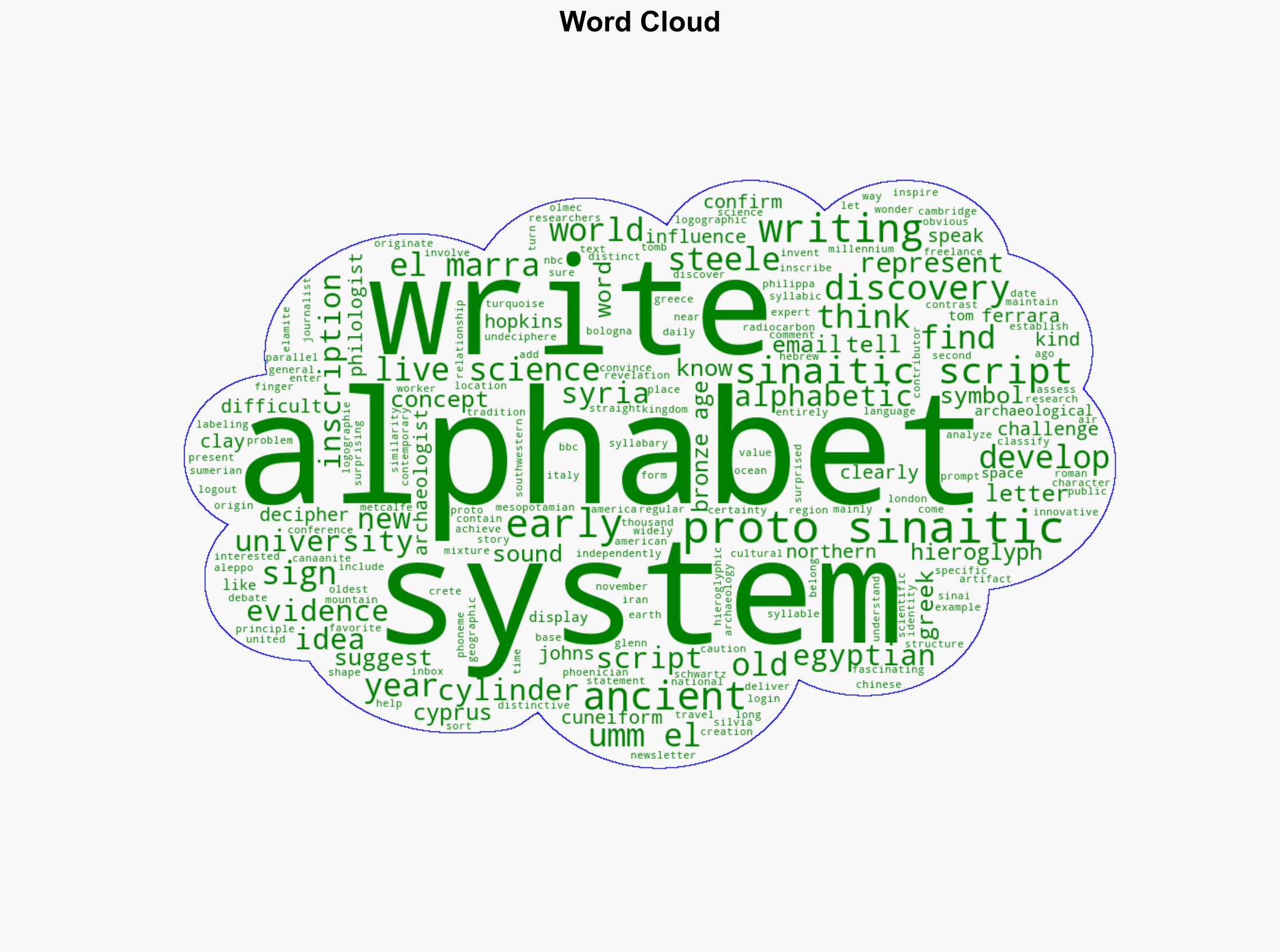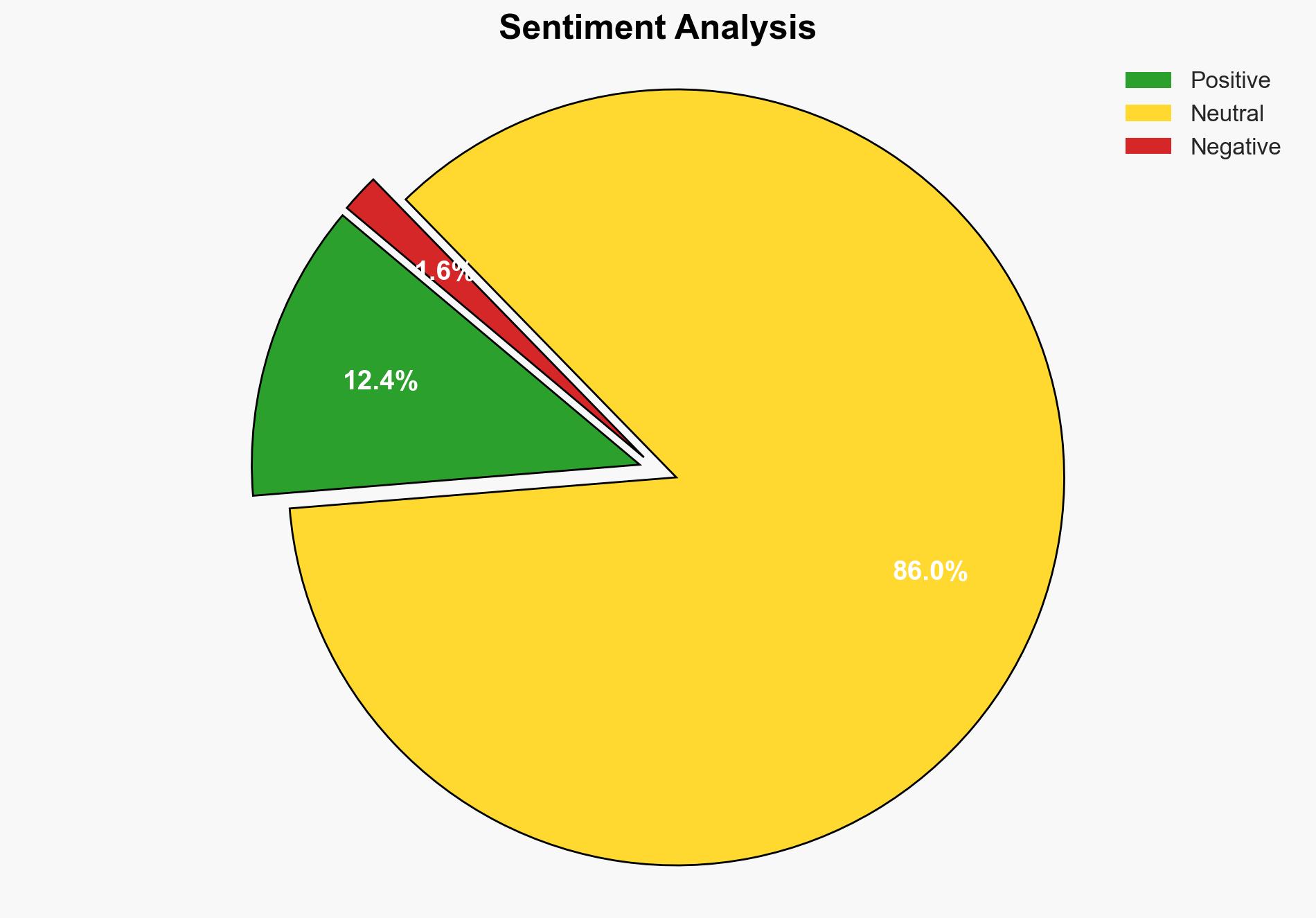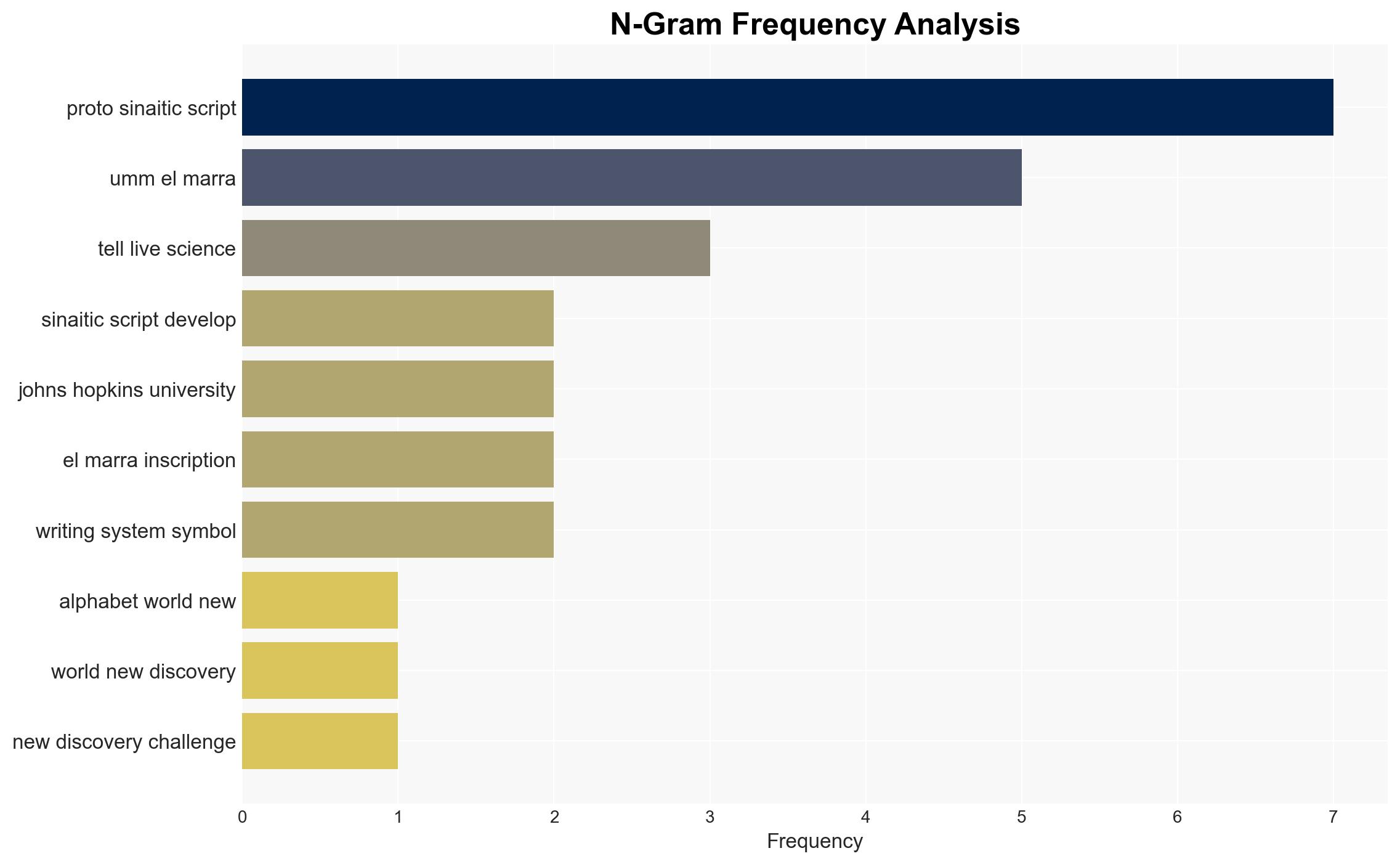What was the first alphabet in the world – Live Science
Published on: 2025-04-06
Intelligence Report: What was the first alphabet in the world – Live Science
1. BLUF (Bottom Line Up Front)
Recent discoveries challenge the long-held belief that the Proto-Sinaitic script is the world’s oldest alphabet. New evidence from northern Syria suggests the existence of an earlier alphabetic script, potentially predating the Proto-Sinaitic by several hundred years. This finding could reshape our understanding of the development of written language and its spread across ancient civilizations.
2. Detailed Analysis
The following structured analytic techniques have been applied for this analysis:
General Analysis
The discovery of a clay cylinder in a Bronze Age tomb near Aleppo, Syria, presents evidence of an alphabetic script that may predate the Proto-Sinaitic script. Radiocarbon dating suggests the cylinder is from a period several hundred years earlier than previously known alphabetic systems. This challenges the conventional timeline and suggests that the development of writing systems might have been more geographically widespread and temporally diverse than previously thought. The implications of this discovery are significant, as it may indicate that the concept of alphabetic writing was independently developed in different regions.
3. Implications and Strategic Risks
The potential revision of the history of written language could impact various academic fields, including archaeology, linguistics, and history. It may also influence cultural heritage narratives and national identities, particularly in regions where ancient scripts are part of the cultural legacy. Additionally, the discovery could lead to increased archaeological interest and activity in Syria, with implications for regional stability and security.
4. Recommendations and Outlook
Recommendations:
- Encourage further archaeological exploration and research in the region to validate and expand upon these findings.
- Promote interdisciplinary collaboration between linguists, archaeologists, and historians to reassess the development of writing systems.
- Consider the implications for cultural heritage policies and the protection of archaeological sites in conflict zones.
Outlook:
In the best-case scenario, these findings could lead to a more nuanced understanding of the origins of alphabetic writing, fostering greater international collaboration in historical research. In the worst-case scenario, increased archaeological activity could exacerbate regional tensions or lead to the exploitation of cultural heritage sites. The most likely outcome is a gradual integration of these findings into the broader academic discourse, prompting a reevaluation of existing theories on the development of written language.
5. Key Individuals and Entities
The report mentions significant individuals and organizations involved in the discovery and analysis:
- Philippa Steele
- Silvia Ferrara
- Glenn Schwartz
- Researchers from Johns Hopkins University
- Philologists from University of Cambridge and University of Bologna





